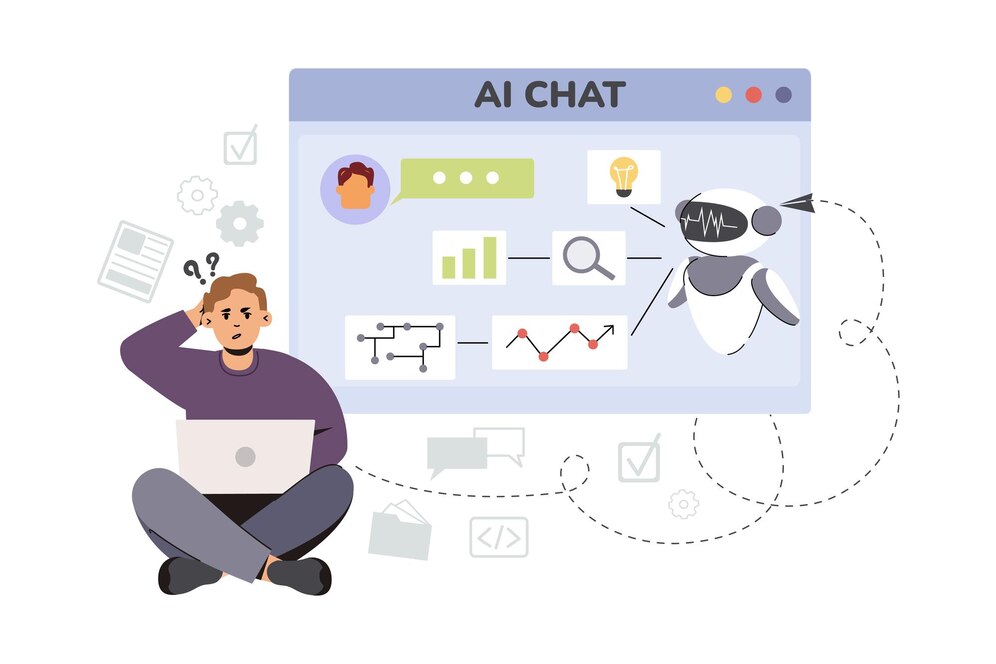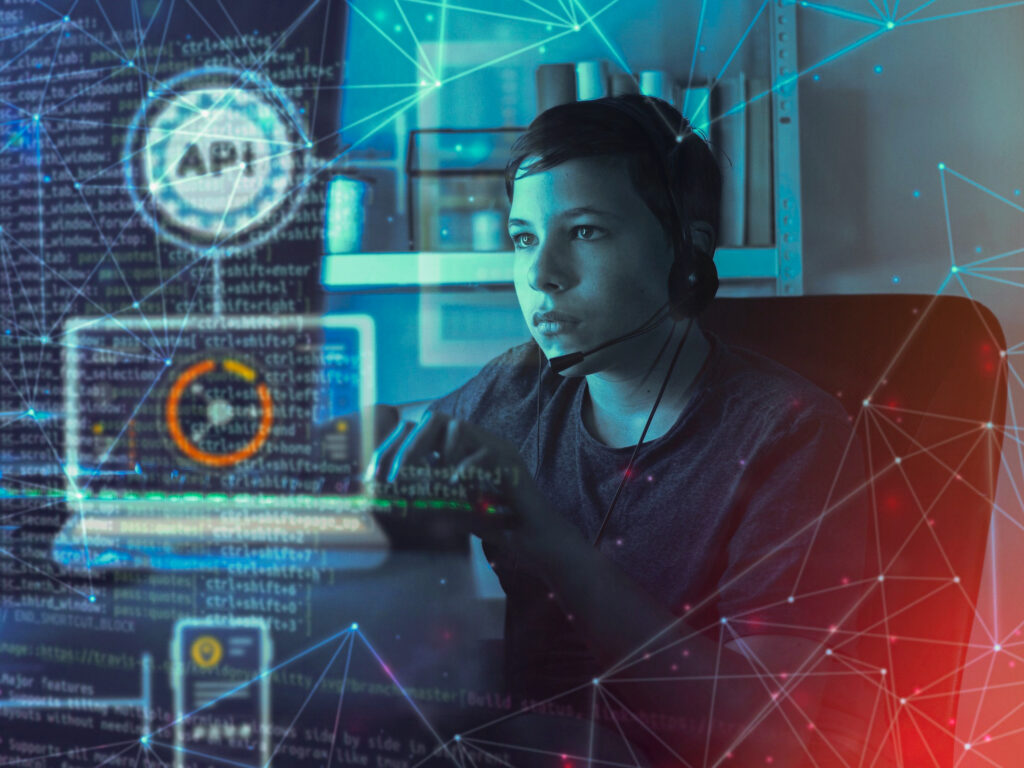Try and picture a world where the lives we lead – employment opportunities, loan approvals, paroles – are determined as much by a machine as by a man. As farfetched as this may seem, it is our current way of life. But like any human innovation, AI is not immune to its pitfalls, one of which is AI bias.
Think of The Matrix, the iconic film where reality is a computer-generated illusion. In the world of AI, bias can be seen as a similar glitch, a hidden distortion that can lead to unfair and even harmful outcomes.
Bias in AI can come from the limited and inaccurate datasets used in machine learning algorithms or people’s biases built into the models from their prior knowledge and experience. Think about a process of selecting employees that is based on some preferences, a lending system that is unjust to certain categories of people, or a parole board that perpetuates racial disparities.
With this blog, we will explore bias in AI and address it to use AI for the betterment of society. Let’s dive into the rabbit hole and unmask the invisible hand of AI bias.
What is AI Bias?
AI bias, also known as algorithm bias or machine learning bias, occurs when AI systems produce results that are systematically prejudiced due to erroneous inputs in the machine learning process. Such biases may result from the data used to develop the AI, the algorithms employed, or the relations established between the user and the AI system.
Some examples where AI bias has been observed are-
- Facial Recognition Fumbles: Biometric systems such as facial recognition software used for security, surveillance, and identity checking have been criticized for misidentifying black people at higher rates. It has resulted in misidentification of suspects, wrongful arrest, cases of increased racism, and other forms of prejudice.
- Biased Hiring Practices: Hiring tools that are based on artificial intelligence to help businesses manage the process of recruitment have been discovered to maintain the existing unfairness and discrimination in the labor market. Some of these algorithms are gender bias, or even education bias, or even the actual word choice and usage in the resumes of candidates.
- Discriminatory Loan Decisions: Automated loan approval systems have been criticized for discriminating against some categories of applicants, especially those with low credit ratings or living in a certain region. Bias in AI can further reduce the chances of accessing finance by reducing the amount of financial resources available to economically vulnerable populations.
These AI biases, often inherited from flawed data or human prejudices, can perpetuate existing inequalities and create new ones.

Types of AI Bias
- Sampling Bias: This occurs when the dataset used in training an AI system does not capture the characteristics of the real world to which the system is applied. This can result from incomplete data, biased collection techniques or methods as well as various other factors influencing the dataset. This can also lead to AI hallucinations which are confident but inaccurate results by AI due to the lack of proper training dataset. For example, if the hiring algorithm is trained on resumes from a workforce with predominantly male employees, the algorithm will not be able to filter and rank female candidates properly.
- Confirmation Bias: This can happen to AI systems when they are overly dependent on patterns or assumptions inherent in the data. This reinforces the existing bias in AI and makes it difficult to discover new ideas or upcoming trends.
- Measurement Bias: This happens when the data used does not reflect the defined measures. Think of an AI meant to determine the student’s success in an online course, but that was trained on data of students who were successful at the course. It would not capture information on the dropout group and hence make wrong forecasts on them.
- Stereotyping Bias: This is a subtle and insidious form of prejudice that perpetuates prejudice and disadvantage. An example of this is a facial recognition system that cannot recognize individuals of color or a translation app that interprets certain languages with a bias in AI towards gender.
- Out-Group Homogeneity Bias: This bias in AI reduces the differentiation capability of an AI system when handling people from minorities. If exposed to data that belongs to one race, the algorithm may provide negative or erroneous information about another race, leading to prejudices.
Examples of AI Bias in the Real World
The influence of AI extends into various sectors, often reflecting and amplifying existing societal biases. Some AI bias examples highlight this phenomenon:
- Accent Modification in Call Centers
A Silicon Valley company, Sanas developed AI technology to alter the accents of call center employees, aiming to make them sound “American.” The rationale was that differing accents might cause misunderstanding or bias. However, critics argue that such technology reinforces discriminatory practices by implying that certain accents are superior to others. (Know More)
- Gender Bias in Recruitment Algorithms
Amazon, a leading e-commerce giant, aimed to streamline hiring by employing AI to evaluate resumes. However, the AI model, trained on historical data, mirrored the industry’s male dominance. It penalized resumes containing words associated with women. This case emphasizes how historical biases can seep into AI systems, perpetuating discriminatory outcomes. (Know More)
- Racial Disparity in Healthcare Risk Assessment
An AI-powered algorithm, widely used in the U.S. healthcare system, exhibited racial bias by prioritizing white patients over black patients. The algorithm’s reliance on healthcare spending as a proxy for medical need, neglecting the correlation between income and race, led to skewed results. This instance reveals how algorithmic biases can negatively impact vulnerable communities. (Know More)
- Discriminatory Practices in Targeted Advertising
Facebook, a major social media platform faced criticism for permitting advertisers to target users based on gender, race, and religion. This practice, driven by historical biases, perpetuated discriminatory stereotypes by promoting certain jobs to specific demographics. While the platform has since adjusted its policies, this case illustrates how AI can exacerbate existing inequalities. (Know More)
These examples demonstrate the importance of scrutinizing AI systems for biases, ensuring they don’t perpetuate discriminatory practices. The development and deployment of AI should be accompanied by ongoing ethical considerations and corrective measures to mitigate unintended consequences.

How to Fix AI Bias?
Given the concerns that arise due to AI biases, it must be noted that achieving fairness and equity in AI systems requires a range of approaches. Here are key strategies to address and minimize biases:
- In-Depth Analysis: Ensure that you go through the algorithms and data that are used in developing your AI model. Evaluate the likelihood of AI bias and measure the size and appropriateness of the training dataset. In addition, perform subpopulation analysis to see how well the model is fairing on different subgroups and keep assessing the model for biases, once in a while.
- Strategic Debiasing: It is necessary to have a good debiasing strategy as an integral part of the overall framework of AI. This strategy should include technical procedures for recognizing the bias sources, working practices for enhancing the data collection procedures, and structural activities for promoting transparency.
- Enhancing Human Processes: Conduct a detailed analysis of the model-building and model-evaluation phases to detect and backtrack on bias in manual workflows. Improve the hiring process through practice and coaching, reform business processes, and increase organizational justice to alter the source of bias.
- Multidisciplinary Collaboration: Recruiting multi-disciplinary professionals in the domain of ethical practices: can involve ethicists, social scientists, and domain specialists. Collectively, their experiences will significantly improve the ability to detect and eliminate bias at every stage of AI.
- Cultivating Diversity: Promote a diverse and inclusive culture within your staff that works on the AI. This can be done while executing the Grounding AI approach, which is grounding or training AI in real-world facts and scenarios. This makes it possible to have different views and identify factors that might have been ignored that would assist in making AI to be more fair to all.
- Defining Use Cases: Choose which specific situations should be handled by the machine and which of them need a human approach. This appears to present a balanced model that can optimally utilize both artificial intelligence and human discretion. You can effectively use the Human in the Loop approach which entails having a human oversight on the AI results.
Conclusion
The exposure of systemic racism in artificial intelligence has put the social promise of these systems into doubt. Concerns have been raised due to the negative impacts of discriminatory AI algorithms including in the areas of employment or healthcare among others, prompting calls for rectification.
Due to the systemic nature of bias in AI technology, which reinforces societal bias and discrimination, it requires a holistic solution. However, solving the problem’s root requires a more profound discussion addressing the subjects of ethics, transparency, and accountability in society.
Looking at the prospects of the mitigation of these biases, Bionic AI stands as a superior option, an AI tool that involves a collaboration between AI and human input. Since human judgment is always involved in the process of creating and implementing Bionic AI systems, the risk of algorithmic bias is reduced. The human-in-the-loop approach of Bionic AI guarantees data collection, algorithm supervision, and regular checks for AI bias and prejudice. Book a demo now!